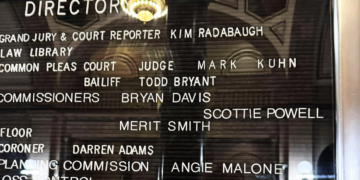Some businesses in Portsmouth don’t need a neon “open” sign—they’ve got the flashing lights of cruisers arriving night after night to let you know something’s going on. And no, we’re not talking about the boarded-up buildings falling in on themselves. We’re talking about active nuisance properties. The shady motels, the corner stores with questionable “customer” traffic, and the nearly hidden shops where the main product seems to be plausible deniability.
These places aren’t dead. They’re thriving. Money is flowing, rooms are occupied, and shelves are stocked—911 knows their addresses by heart. These nuisance properties are not falling apart on the outside, but they’re rotting from within, dragging entire blocks down with them.
For those who remember how Portsmouth used to deal with these parasites, there’s a certain old-school strategy worth revisiting. One that didn’t rely on high-tech dashboards or algorithms. It was called herding.
🚔 Herding: The Human Algorithm That Worked
Back in the 1970s and ’80s, police used a direct, unrelenting method to handle chronic problem businesses. They believed in wearing out the welcome mat at crime-ridden spots, herding meant this:
- You don’t just respond to a call and leave.
- You stay.
- You show up again the next day.
- You make your presence felt—every hour, every shift.
Park the cruiser out front. Walk the property. Ask for IDs. Check cameras. Knock on doors. Let every customer, clerk, dealer, and loiterer know: this place is under the microscope.
Was it annoying? Yes.
Was it effective? Absolutely.
Criminals hate visibility. They crave anonymity and chaos. Herding stripped that away. It pressured property owners to clean up, or eventually close up. It turned “nuisance properties” into productive spaces—or made them disappear altogether.
The best part? It didn’t require a federal grant or predictive software. Just time, consistency, and guts.
🔮 Predictive Policing: The New Digital Fix
Fast forward to today. Police departments across the country are buying into predictive policing software—AI-powered platforms that digest historic crime data, dispatch logs, and neighborhood patterns to forecast where future crimes are likely to occur. These aren’t gut-based hunches. They’re data-driven “zones” meant to tell officers: “Go here. Trouble’s coming.”
In theory, it’s efficient. Smarter patrols. Better allocation. Faster response.
But it also opens the door to a dangerous trend: pre-crime policing.
When we rely too heavily on algorithms, we risk treating areas like suspects, and businesses like future crime scenes before a single offense is committed.
Worse, it becomes easy for nuisance businesses to hide behind the algorithm.
If they’re not flagged as a “hot zone” by the software, do they still get attention? Or do they just slip under the radar—again?
💡 There Is No Substitute for Pressure
The truth is, AI can suggest where to go—but it can’t replace what herding did best: make criminals and negligent business owners deeply uncomfortable.
There’s no better deterrent than consistent, visible police presence. Not just a patrol car using a random parking lot as a coffee break spot. But targeted, deliberate, stay-on-it pressure. (Fun fact, they can still drink their coffee) The kind of presence that makes the guy loitering out front look over his shoulder. That makes the clerk think twice about what’s happening in the back room. That herds a bad business toward one of two futures: clean up, or close down.
🧠Less Talk, More Walk
Portsmouth doesn’t need to predict crime. It needs to confront the places where crime is already happening, right now, under the illusion of commerce.
Those shady motels raking in daily cash while hosting overdoses and assaults? They’re not community businesses—they’re liabilities wearing price tags. The longer we wait for data to tell us what we already know, the more we let these places drain the city one broken promise at a time.
So yes, tech has a place. Predictive zones can help. But the badge still beats the algorithm. And boots-on-the-ground pressure still clears out more garbage than any software dashboard ever will.




















































































